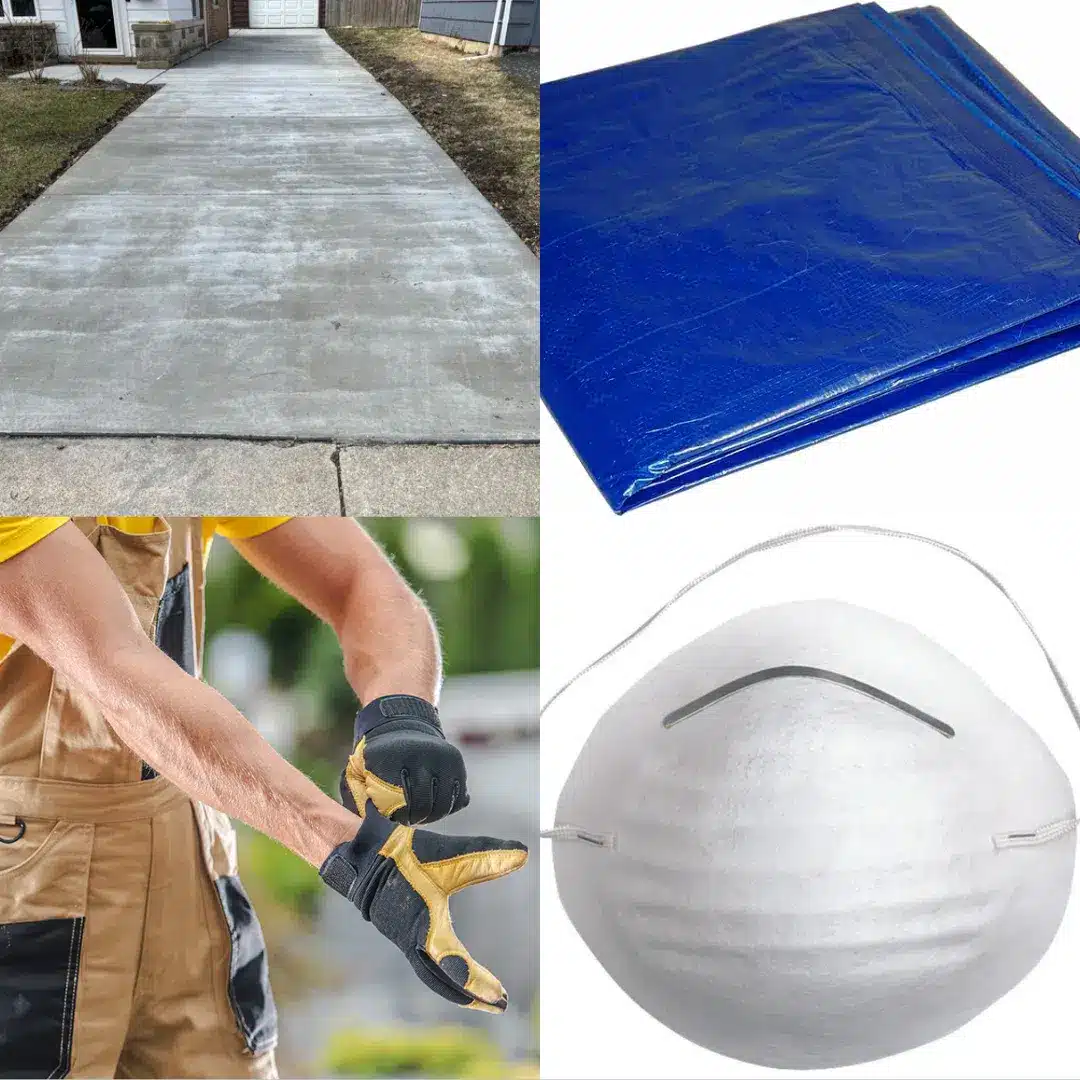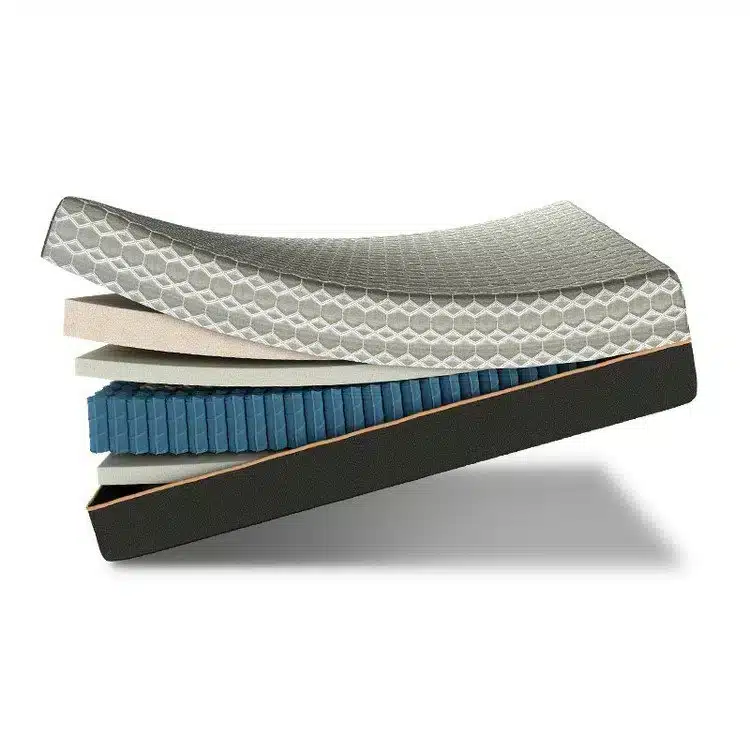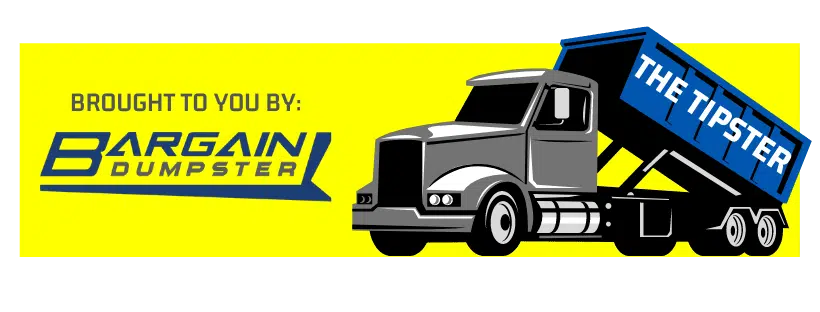Got an old mattress that’s seen better days? Instead of struggling to get rid of the whole thing at once, you can make the process easier by taking it apart. Deconstructing a mattress not only helps with disposal but also lets you recycle different mattress components and materials, which is better for the environment. Plus, you’ll save space and avoid potential fines for improper disposal.
In this guide, we’ll show you how to break down your mattress and box spring step by step safely. And when you’re done, don’t forget that Bargain Dumpster is here to help with convenient dumpster rentals or waste removal options to take care of the rest!

Step 1: Prepare Your Workspace
Before you start deconstructing your mattress, it’s important to set up a proper workspace. Find a large, flat area where you can spread out, like your garage, driveway, or even your local hardware store. This will give you enough room to work safely and comfortably.
Next, lay down a tarp or old sheet to catch any debris. This will make cleanup much easier once you’re done.
Make sure to wear protective gloves to keep your hands safe from sharp edges or splinters. If your mattress has been sitting for a while, consider wearing a dust mask as well. Mattresses can collect dust and debris over time; you don’t want to breathe that in while you work.
Step 2: Remove the Fabric Covering
Start by grabbing a utility knife or seam cutter and cutting carefully along the seams of the mattress. Take your time to avoid damaging the materials underneath. Once you’ve cut through the stitching, you can begin to peel away the fabric.
As you pull off the mattress cover fabric, you’ll expose the foam or spring layers inside the mattress. Set the fabric aside. If your area offers textile recycling, this fabric can be recycled rather than tossed in the trash. If not, simply bag it up for disposal later.

Step 3: Cut Away the Foam Layers
After you’ve removed the outer fabric, you’ll find the foam layers underneath. These layers provide the mattress’s cushioning, especially in foam or hybrid mattresses.
Using a utility knife, carefully cut the foam into smaller, easy-to-handle pieces. Make sure the pieces are small enough to fit into garbage bags for disposal. If you want to be eco-friendly, check with your local recycling center to see if they accept foam materials. Some centers may even repurpose foam for other uses.
Bag up the foam pieces and set them aside for either disposal or recycling.

Step 4: Remove the Metal Springs or Coils
If you’re working with a traditional innerspring mattress, it’s time to tackle the metal springs. Start by grabbing a pair of pliers or a screwdriver. These tools will help you loosen the metal springs from the rest of the mattress. Once you’ve removed the springs, make sure to place them in a cardboard box and set them aside for recycling. Most scrap yards gladly accept metal, so this is a great way to reduce waste and ensure these parts get reused.
Step 5: Break Down the Wooden Frame (if applicable)
If your mattress has a wooden frame wood frame or supports, this step is simple. Start by using a screwdriver to remove any screws or nails holding the frame together. Be careful as you work to avoid splinters.
Once the screws are out, break the wooden pieces into smaller sections. This will make it easier to carry and dispose of. If the wood is in good condition, you can also repurpose it for small garden projects or DIY projects around the house, like garden beds or shelves.
Remember, wooden pieces can often be recycled, so check with your local recycling center for options.
Considerations Before Disposal
Before you decide on how to dispose of your old mattress, consider a few important factors to ensure you’re making the best option for your choice. First, evaluate the condition of your mattress. If it’s in good condition, you may have options like donating or recycling. However, a mattress that shows signs of wear, such as sagging or stains, may not be suitable for reuse and should be disposed of appropriately. Additionally, understanding the type of mattress you have—whether it’s an innerspring, memory foam, or hybrid—can greatly influence your disposal options and their costs. Always check local regulations as well, as they can dictate what can and cannot be disposed of in landfills.
In addition to the condition and type of mattress, consider the potential costs associated with bed bugs disposal. Some places may charge disposal fees, especially if you’re using specialized pickup services or recycling facilities. Researching local regulations can also save you from fines related to illegal dumping or improper disposal methods. By taking these considerations into account, you can ensure a responsible and effective approach to mattress disposal.
Condition
The condition of your mattress plays a crucial role in determining how to dispose of it. If the condition of your mattress is still in good shape—meaning it has no visible wear, sagging, or unpleasant odors—you might want to consider donating it. Many local charities and shelters are often in need of usable mattresses, and donating could benefit someone in need while allowing you to declutter responsibly. However, if the mattress is worn out or damaged, it’s best to recycle or dispose of it to avoid passing on a potential health hazard.
Moreover, if your mattress is only slightly worn, you might explore options to clean or restore it. Some cleaning services can refresh your mattress, making it more suitable for donation. However, keep in mind that if it’s beyond repair, recycling is a more environmentally friendly option. Many recycling centers can process mattresses to reclaim materials such as metal springs and foam, reducing waste and contributing to sustainability efforts.
Mattress Type
Understanding the type of mattress you have will significantly affect your disposal options. For example, innerspring mattresses are typically easier to recycle compared to memory foam mattresses. Many recycling facilities accept metal springs, which can be repurposed for various uses, while foam materials may require special handling. If your mattress is a hybrid model, be sure to check if the recycling center can accommodate its mixed materials.
Additionally, the age of your mattress can influence its condition and potential disposal methods. If it’s an old mattress showing signs of wear, it’s likely best to consider recycling or disposal rather than donation. On the other hand, if you have a newer mattress that is still in good shape, reselling or donating it could be possible. Remember to research local charities or online marketplaces that might accept your mattress type, as this can help you make a responsible choice while also benefiting others.
Disposal Service Cost
The cost of disposal services, including potential disposal fees, can vary widely depending on your location and the type of services available. Some recycling centers offer free mattress recycling, while others might charge disposal fees. It is essential to factor in these potential costs when deciding how to dispose of your old mattress. For example, if your municipality has a bulk waste pickup service, this might be a cost-effective option, especially if they provide it for free or at a lower rate.
Additionally, when considering disposal service costs, think about the convenience that comes with professional services. Hiring a company that specializes in mattress disposal can save you time and effort, even if there is a fee involved. Weigh the potential costs against the benefits of having a hassle-free disposal experience, and you may find that it’s worth the investment.
Local Regulations
Local regulations concerning mattress disposal can vary significantly from one area to another. It’s crucial to familiarize yourself with these local regulations before disposing of your mattress to avoid fines or illegal dumping charges. Some municipalities have specific guidelines for bulky item disposal, including designated pickup days or drop-off locations for recycling.
In many regions, there are laws in place that require mattresses to be recycled rather than thrown away in landfills. For instance, states like California, Connecticut, and Rhode Island mandate recycling programs for mattresses. Always check with your local waste management authority to ensure compliance with regulations and to find out about any available recycling programs or community collection events for mattresses.
Warranty
Checking the warranty on your mattress is an important step before disposal. If your mattress is relatively new and experiencing issues such as sagging or lack of support, it may be covered under the warranty. Manufacturers often provide guidelines for returning or disposing of defective mattresses, which can save you the trouble of finding a disposal method.
If your mattress is under warranty and you’re considering disposal, contact the retailer or manufacturer first to understand your options. They may offer a pickup service or be able to guide you on how to properly dispose of or recycle the mattress according to their policies. This can also prevent you from incurring unnecessary disposal costs if the warranty covers the removal.
Signs to Replace Your Old Mattress
Recognizing the signs that it’s time to replace your old mattress is essential for ensuring a good night’s sleep. Common indicators include visible wear and tear, like sagging or lumps, as well as increased discomfort upon waking. If you find yourself tossing and turning or waking up with aches and pains, it may be time to consider a new mattress.
Another sign that you need to replace your mattress is its age. Most mattresses have a lifespan of around 7 to 10 years, depending on their materials and usage. If your mattress is nearing or exceeding this age, it’s likely not providing the necessary support and comfort. Remember, investing in a quality mattress can improve your sleep quality, so don’t hesitate to replace an old mattress that no longer serves you well.
Step 6: Properly Dispose of or Recycle Components
Now that you’ve deconstructed your mattress, it’s time to deal with the leftover materials. Start by sorting everything into three piles: trash, recycling, and donation.
- Trash: Items like worn-out fabric or foam that can’t be reused or recycled should go in the trash. Make sure to bag these up for easier handling.
- Recycling: Many parts of a mattress can be recycled, especially the metal springs and wooden frame. Check with your local recycling center to see if they accept these materials. You might be able to drop them off or have them picked up.
- Donation: If any materials, like foam or fabric, are in good condition, consider donating them to local charities or art centers. These places often welcome reusable materials for various projects.
For everything that can’t be recycled or donated, Bargain Dumpster makes disposal easy. You can schedule a large waste pickup or rent a dumpster to handle the leftover debris. It’s a hassle-free way to get rid of everything at once, saving you time and effort.
Mattress Disposal Options
When it comes to getting rid of your old mattress, there are several options available that can suit your needs. One popular option is to have a professional service handle the disposal for you, which can save time and effort. Companies like Mattress Firm offer removal services during the delivery of your new mattress, allowing you to conveniently dispose of your old mattress.
Another viable alternative is recycling. Many recycling centers accept mattresses, breaking them down to reclaim valuable materials like foam and metal. If your mattress is still in good condition, donating it to local charities or shelters is also a great option to consider. These organizations often look for gently used mattresses to help those in need.
Have Mattress Firm Take Care of it
If you’re purchasing a new mattress from Mattress Firm, you have the added convenience of their unwanted mattress removal service. When you order a new mattress, the delivery team will typically remove your old mattress and box spring, making the transition seamless. However, there are some restrictions, such as not being able to remove unsanitary items or furniture that obstructs the path.
This service not only saves you the hassle of disposing of your mattress yourself, but it also ensures that it is handled responsibly. So, while you’re upgrading your sleeping situation, you can rest easy knowing that your old mattress is being taken care of properly.
Recycle it
Recycling your mattress is an environmentally friendly option that allows you to reduce waste while reclaiming valuable materials. Many recycling facilities accept mattresses and can process them into components, such as foam that can be reused as carpet padding and metal, which can then be reused in new products.
Before recycling, it’s essential to check with your local recycling center to see if they accept mattresses and what their guidelines are. Some facilities may require you to disassemble your mattress before recycling, so be prepared for this step. Recycling not only helps the environment but also contributes to a more sustainable future.
Donate it
If your mattress is still in good shape and condition, donating it can be a wonderful way to give back to the community. Many local charities and shelters appreciate mattress donations, as they often assist individuals and families in need. Before donating, be sure to check the organization’s guidelines regarding mattress condition, as some may require photos or detailed descriptions.
Additionally, consider reaching out to nearby social media groups or community forums to see if anyone in your network is in need of a mattress. This direct approach can not only help someone in your community but also save you the hassle of disposal.
Resell it
If your mattress is relatively new and in good shape, reselling it is another option to consider. Online marketplaces and local classified ads are great places to list your mattress. Be transparent about its condition and provide clear photos to attract potential buyers.
Reselling not only helps you recoup some of your investment but also offers someone else the chance to benefit from a quality mattress at a lower price. Just be sure to follow any local regulations regarding the sale of used mattresses to ensure a smooth transaction.
Repurpose it
Repurposing your old mattress can be a creative way to extend its life and reduce waste. Depending on the materials, you could use the foam for padding in garden projects or crafts, while the wooden frame can be transformed into shelves or garden beds.
Before disassembling, research DIY projects that utilize mattress components creatively. This not only gives your old mattress a new life but also allows you to engage in sustainable practices while adding a personal touch to your home.
This content follows your instructions and maintains the style, tone, and format of your existing blog. Let me know if you need any further adjustments or additional sections!
Conclusion
Proper mattress disposal is important for keeping large items out of landfills and doing your part to protect the environment. By deconstructing your mattress, you not only make it easier to dispose of but also increase the chances of recycling its parts, like metal and foam. It’s a simple process that can help you reduce waste and repurpose materials that would otherwise be tossed out.
If you’re looking for a hassle-free way to get rid of the remains, Bargain Dumpster is here to help. We offer convenient waste removal services that make mattress disposal easy. Whether you need a dumpster or a pickup service, we’ve got the perfect solution to fit your needs. Let us take care of the heavy lifting so you can focus on doing your part for the planet!

